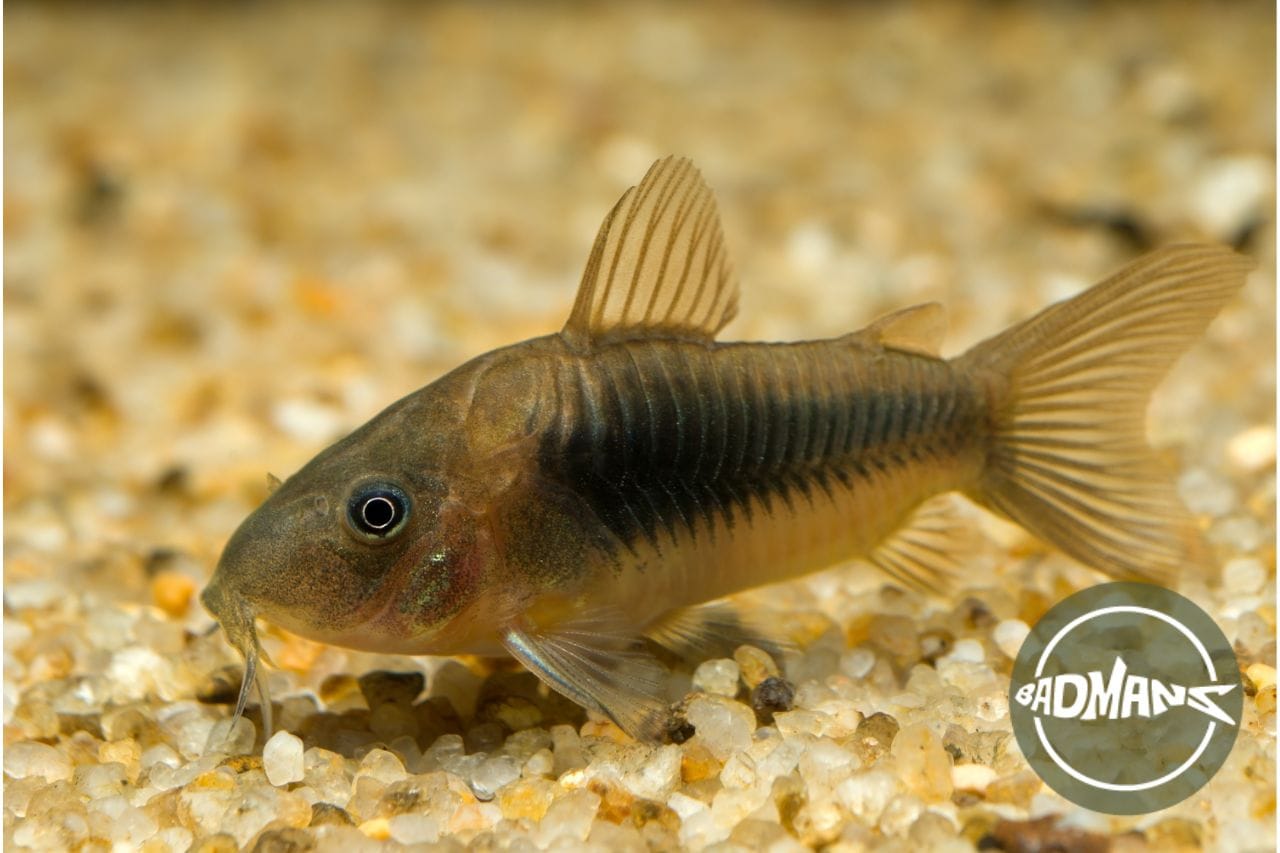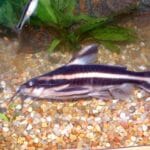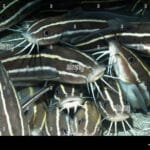Corydoras Catfish: A Complete Guide to Their Care, Types & Tank Mates
Prepare to be enchanted by the world of Corydoras catfish! These adorable, armored bottom-dwellers will steal your heart with their captivating antics. From their lively social behavior to their diverse species, Corydoras catfish offer a captivating underwater experience. Whether you’re a seasoned aquarium enthusiast or a curious newbie, this guide will equip you with everything you need to know about these fascinating creatures. Get ready to dive into their intriguing world and discover how to create a thriving home for these underwater cuties.
Unveiling the Corydoras: Aquarium Sidekicks with Big Personalities
Corydoras catfish, affectionately called “cories” by enthusiasts, are the ideal aquatic companions—peaceful, playful, and they even help keep things tidy! These peaceful catfish are renowned for their algae-grazing habits, making them a fantastic clean-up crew for your aquarium. But their appeal goes far beyond their cleaning abilities. With their engaging personalities and a vast array of patterns and colors, cories are sure to make your tank the envy of every aquarist.
A World of Cories: Exploring the Diverse Types
The Corydoras family is incredibly diverse, boasting over 160 known species—and scientists believe there may be even more waiting to be discovered! They come in a variety of sizes, from the tiny Pygmy cory catfish to the larger Julii Corydoras.
Don’t worry if you don’t have a massive tank; there’s a cory catfish for everyone. Compact setups are perfect for dwarf Corydoras, like the Pygmy or those with distinctive tail spots. If you have a larger community tank, the eye-catching Bronze Corydoras or Leopard Corydoras will feel right at home.
Creating a Corydoras Haven: Essential Care Tips
Just like any cherished companion, your Corydoras catfish need the right care to flourish. Here’s what you need to know to keep them happy and healthy:
Setting the Stage:
- Tank Size: A 10-gallon tank is the minimum for smaller cories, but a larger tank is always recommended, especially for groups or larger species.
- Sandy Substrate: Cories have sensitive barbels—whisker-like organs they use to locate food. Sand provides a gentle surface, while gravel can injure their delicate barbels.
- Plant Power: Cories thrive in planted tanks. Plants offer hiding spots, create a more natural environment, and contribute to water quality.
Water Wisdom:
- Clean and Filtered: Regular water changes and a good filtration system are essential for maintaining optimal water quality.
- Slightly Acidic to Neutral pH: Cories prefer slightly acidic water, but they can adapt to a neutral pH as well.
- Gentle Flow: Avoid strong currents, as cories prefer calmer waters.
Feeding Time:
- Bottom Feeders: Cories are bottom feeders, so choose sinking pellets specifically designed for them.
- Treat Them: Supplement their diet with live or frozen foods like bloodworms or brine shrimp for added nutrition and enrichment.
- Monitor Feeding: Some cories can be shy eaters. Ensure each fish gets their fair share, especially in a community setting.
Harmonious Habitats: Choosing Tank Mates for Your Cories
Corydoras catfish are exceptionally peaceful, so it’s essential to choose tank mates that share their gentle nature. Avoid large or aggressive fish that might mistake your cories for a snack. Here are a few compatible companions:
- Neon Tetras: These vibrant and peaceful fish add a splash of color to any community tank.
- Guppies: Another colorful and easygoing option that coexists beautifully with cories.
- Discus: For experienced aquarists, discus can be suitable tank mates, but they require specific water conditions that must be carefully maintained.
A Glimpse of Corydoras Courtship: Breeding in the Aquarium
With the right conditions, you might even witness the wonder of Corydoras breeding in your own aquarium!
- Spark the Romance: A water change with slightly cooler water can sometimes trigger spawning behavior.
- Egg-laying Rituals: Female cories lay adhesive eggs on plants or even the tank glass.
- Fry-tastic!: Once the eggs hatch, you’ll have a tank full of adorable fry (baby cories). Be prepared to provide them with specialized care and food to help them grow.
Corydoras: The Perfect Aquatic Companion
Whether you’re a seasoned aquarium enthusiast or just starting out, Corydoras catfish are an excellent choice. They’re captivating to observe, easy to care for, and they’ll even lend a fin to keep your tank clean! Provide them with a comfortable home and a little love, and they’ll reward you with their playful antics and captivating colors for years to come.
Outperforming Your Competition: How Many Corydoras Should Be Kept Together?
While easy to care for, one common question among new Corydoras owners is how many should be kept together. Understanding their social needs is key to creating a thriving environment for these fascinating fish.
Corydoras are Social Butterflies: The Importance of Schooling
Corydoras catfish are naturally gregarious. In the wild, they inhabit rivers and streams in large schools, often numbering in the hundreds. While replicating such numbers in a home aquarium isn’t feasible, it highlights their inherent need for companionship.
Keeping Corydoras in groups offers several benefits:
- Stress Reduction: A larger group provides a sense of security, mimicking their natural social structure and reducing stress levels.
- Enhanced Natural Behaviors: In groups, Corydoras are more likely to engage in natural behaviors such as foraging together, playful interactions, and displaying their characteristic swimming patterns.
- Increased Activity and Confidence: A confident shoal of Corydoras will be more active, exploring their environment more freely and adding to the dynamism of your aquarium.
Finding the Right Balance: Tank Size and Group Dynamics
The ideal group size for your Corydoras will depend on the size of your tank and the specific species you choose:
- Minimum Group Size: Aim for a minimum of six Corydoras of the same species to provide adequate social interaction and reduce the risk of stress or aggression.
- Ideal Group Size: When space allows, groups of ten or more offer an even richer social experience, encouraging more natural behaviors and a sense of security.
- Tank Size Considerations:
- Small Species (e.g., Pygmy Corys): A 10-gallon tank can comfortably house a small group of these petite cories.
- Larger Species (e.g., Bronze, Panda Corys): A 20-gallon tank or larger is recommended to provide adequate swimming space for these larger, more active species.
Debunking the Inch-Per-Gallon Myth: Prioritizing Swimming Space
The old adage of one inch of fish per gallon of water is a highly simplified and often inaccurate guideline for stocking an aquarium. It fails to account for the unique needs of different species and can lead to overcrowding, particularly for active fish like Corydoras.
Instead of focusing solely on water volume, prioritize providing ample open swimming space. A longer tank is generally preferable to a taller one, as it provides more horizontal swimming area. Additionally, aquascaping plays a vital role. While Corydoras appreciate hiding spots, avoid cluttering the tank, ensuring they have plenty of open space to swim and interact.
Creating a Corydoras Paradise: Beyond Group Size
While group size is crucial, other factors contribute to a thriving Corydoras community:
- Substrate: As mentioned earlier, opt for soft sand or smooth, rounded gravel to protect their sensitive barbels.
- Aquascaping: Provide a variety of hiding spots using caves, rocks, driftwood, and plants. This mimics their natural environment and offers a sense of security.
- Compatible Tank Mates: Choose tank mates that are peaceful and share similar water parameter requirements.
By following these guidelines, you can create a harmonious and stimulating environment where your Corydoras will thrive. Remember, a happy Corydoras is an active Corydoras, bringing life and personality to your aquarium.
Are Corydoras Aggressive? Unveiling the Truth About These Peaceful Catfish
One of the most common questions about Corydoras catfish is whether or not they are aggressive. The short answer is no. Corydoras have a reputation for being incredibly peaceful, often more likely to be the target of bullying than the bully themselves. However, some behaviors can be misinterpreted as aggression, leading to confusion among new Corydoras keepers.
Dispelling the Myths: Understanding Corydoras Behavior
- Playful Chases: Corydoras are active fish, and it’s not uncommon to see them chasing each other around the tank. This behavior is generally playful and not a cause for concern. It’s simply their way of socializing and exploring their surroundings.
- Breeding Battles (Sort of): During breeding season, male Corydoras can become more territorial as they compete for the attention of females. This may involve some chasing, fin-nipping, and posturing, but it’s usually harmless and short-lived.
- Stress-Induced Behaviors: Like any animal, Corydoras can exhibit unusual behaviors when stressed. Poor water quality, a cramped environment, or aggressive tank mates can all lead to stress.
Creating a Peaceful Habitat: Setting Your Cories Up for Success
- Choose Tank Mates Wisely: Avoid keeping Corydoras with known fin-nippers or aggressive species. Good tank mates include other peaceful community fish like neon tetras, guppies, and small rasboras.
- Provide Ample Space: Overcrowding can lead to stress and aggression in any fish, including Corydoras. Ensure your tank is appropriately sized for the number and species of fish you keep.
- Maintain Pristine Water: Corydoras are sensitive to water quality. Regular water changes and a well-maintained filtration system are essential for their health and well-being.
People’s Statement:
- “Overall these are about the least aggressive fish you can find. They won’t attack others and will hide without defending themselves against their attackers.”
This statement, gathered from experienced Corydoras keepers, reaffirms their peaceful nature. They are not equipped to defend themselves against aggression and would much rather retreat than engage in a fight. By understanding their behavior and providing a suitable environment, you can ensure your Corydoras live a happy and peaceful life in your aquarium.
Debunking the Myth: Are Corydoras Catfish Really That Delicate?
Corydoras catfish have garnered a reputation for being easy to care for, making them a popular choice for both novice and experienced aquarists. But are they truly as invincible as their reputation suggests? While Corydoras are generally hardy and adaptable, it’s essential to understand the nuances of their care requirements to ensure their long-term health and vitality.
Hardiness with a Caveat: Understanding Species Variation and Care
It’s important to note that while the statement “Cory catfish are not hard to keep and are overall hardy fish” generally holds true, it primarily applies to the more common species readily available in the aquarium trade. With over 160 recognized Corydoras species, there is bound to be some variation in hardiness and adaptability.
- Common vs. Rare Species: Wild-caught or rarer Corydoras species may have more specific requirements regarding water parameters, diet, or even social interactions. If you’re considering a less common Corydoras species, thorough research is vital before you bring them home.
Setting the Stage for Success: Key Factors for Corydoras Longevity
Providing the right environment is crucial for ensuring your Corydoras catfish thrive. Here’s a closer look at the key factors that influence their well-being:
- Water is Life: The Importance of Stable Parameters: Corydoras are sensitive to fluctuations in water parameters. Aim for a pH between 7.0 and 8.0, a temperature range of 72-81°F (22-27°C), and a hardness level of 5-19 dGH. Regular water testing and partial water changes are essential for maintaining stability.
- The Case for Sand: Protecting Delicate Barbels: As mentioned earlier, a sand substrate is non-negotiable for Corydoras. Their sensitive barbels can be easily damaged by sharp gravel, leading to infections or difficulty feeding.
- Oxygen: More Than Just Gills: While Corydoras breathe primarily through their gills, they also possess the remarkable ability to gulp air from the surface to supplement their oxygen intake. Ensure adequate oxygenation through an air pump, airstone, or by creating gentle surface agitation with your filter outflow.
- A Balanced Diet for a Healthy Life: Corydoras are omnivores, meaning they require a diet that includes both plant and animal matter. A high-quality sinking pellet formulated for bottom feeders should form the foundation of their diet. Supplement with frozen or live foods such as bloodworms, brine shrimp, and daphnia.
Recognizing the Signs: Early Detection for Long-Term Health
Observing your Corydoras regularly can help you identify potential health issues early on. Signs of stress or illness can include:
- Changes in Appetite: A sudden decrease or increase in appetite can indicate a problem.
- Lethargy: If your normally active Corydoras become lethargic or spend excessive time hiding, something might be wrong.
- Rapid Breathing: While Corydoras do gulp air from the surface, rapid or labored breathing can be a sign of stress or poor water quality.
- Physical Abnormalities: Look for any unusual physical changes such as fin clamping, discoloration, bloating, or white spots on the body.
By understanding the factors that contribute to Corydoras hardiness and being attentive to their needs, you can create an environment where these endearing catfish can live long, healthy lives. While their reputation for being “easy” fish is generally well-founded, remember that responsible care involves more than just providing food and water. It requires understanding their unique needs and being proactive in addressing any potential concerns.
- First Lady Book: A History of Power and Influence - April 2, 2025
- Uncover James Albert King: A Legacy Revealed - April 2, 2025
- Georgia Platform: A Southern Strategy, 1850s - March 31, 2025

















1 thought on “Corydoras Catfish: A Complete Guide to Their Care, Types & Tank Mates”
Comments are closed.